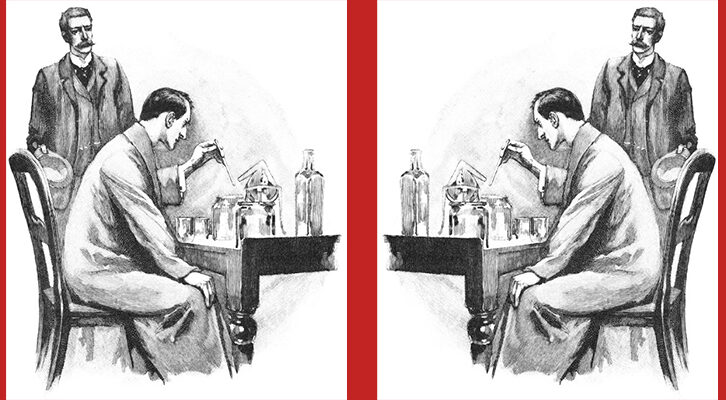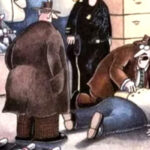
Is "Show Don't Tell" a Universal Truth or a Colonial Relic?
Namrata Poddar on the Western Preference for Visual Over Oral Storytelling
Recently, I transitioned from a world of transnational literary criticism into a predominantly white American creative writing workshop culture. As I moved from one fledgling story draft to another, the comments I received most consistently as feedback in my workshop seemed to be the standard fare for most novice writers: “show, show, show,” “show, don’t tell,” “convert into scene,” “externalize,” “get rid of exposition” and “what does this place or character look like?” For this repeated advice, I remain indebted to my workshop readers. After all, which storyteller worth her salt can afford to ignore the Chekhovian dictum today? “Don’t tell me the moon is shining; show me the glint of light on broken glass.” This counsel to “paint a picture” feels even more relevant in a 21st century whose readers, including myself, consume stories increasingly through images—be it Facebook, Twitter, Instagram, or Hollywood and Bollywood blockbusters.
Yet, while perusing my drafts for strategies of revision, the aspiring fiction writer in me often wondered if “painting a picture” would be a most effective artistic move, especially in an age where verbal or textual storytelling competes constantly with visual and virtual storytelling. And when I moved away from the objective “facts” of our cinematic and digital age to the more subjective terrain of memory, I found that I hardly remembered what my favorite characters or their surroundings looked like in stories. Instead, what I tend to remember first about most of my favorite characters is what they say or sound like. In other words, amid the enormous cast of characters that crowd my literary memory, I’m certain of not confusing Salman Rushdie’s Amina Sinai whatsitsname with John Cheever’s Pommeroy matriarch who enjoys a fabulous time by the East Coast, sipping Martinis. Likewise, in the cacophony of womanizing jerks clogging our literary canon—God damn—I would hear Junot Díaz’s Yunior from miles away.
As I processed a dominant Euro-American writing pedagogy from the perspective of an aspiring fiction writer and an immigrant critic of color, I couldn’t stop wondering: are we, in 21st-century America, overvaluing a sight-based approach to storytelling? And could this be another case of cultural particularity masquerading itself as universal taste?
To find answers, I turned toward contemporary writers of color and a narrative form with deeper roots in my (or any) cultural history—the short story.
* * * *
In his essay “The Storyteller” (1936), cultural critic Walter Benjamin mourns the death of oral and communal storytelling, taken over in modern history by the novel, the “birthplace of the solitary reader,” and information technology with a rise in capitalism. Yet, what Benjamin posits as the organic evolution of oral, communal practices of storytelling into modern modes of storytelling, consumed by a reader in “privacy,” is in fact, the understanding of a Western history of storytelling as a universal one. As Maggie Awadalla and Paul March-Russell suggest in the introduction to their anthology The Postcolonial Short Story (2012), many non-Western countries did not transition “organically” from oral to written storytelling with a rise in capitalism. For many formerly or currently colonized spaces like South Asia, Africa, Caribbean, American South and Native America, there has always existed a rich, vibrant tradition of oral storytelling, one that was marginalized, often violently, through an imposition of an allegedly modern, white Western language and culture. In their study, Postcolonial Studies: The Key Concepts (1998), Bill Ashcroft, Gareth Griffiths and Helen Tiffin defend “orality” not as a cultural precondition that morphed into a more advanced written culture, but orality as a counterpart to writing, where both co-exist, complement and transform each other constantly. This coexistence of oral and written modes of storytelling continues to thrive in postcolonial spaces, including those of Asia and Africa.
In her now-canonical essay “Characteristics of Negro Expression” (1934), Zora Neale Hurston makes a strong case for the use of vernacular—especially dialect and rhythm—in Black writing. In his story collection, Creole Folktales (1988) and equally canonical co-authored essay, “In Praise of Creoleness” (1989), Patrick Chamoiseau offers a manifesto for Caribbean storytelling that aims to free itself of French colonial gaze by transforming Martinican-French literature through a militant use of Creole. And while not through cultural theories or essays, contemporary writers like Salman Rushdie, Vikram Chandra, Roxane Gay, Junot Díaz, and Edwidge Danticat, among others, bring a strong, self-conscious vernacular in their stories. Their fiction questions not only an allegedly mainstream Euro-American storytelling marked by narrative brevity and an economy of words, as lauded by Edgar Allan Poe, John Barth and Francine Prose in their critical writing, but also the dominance of visuality in many fiction writing workshops with their show-don’t-tell credo, bolstered by our cinematic and digital age with its preference for images over sounds.
* * * *
Let’s take a look at, or rather, let’s hear South Asian-British-American writer Salman Rushdie—one of the noisiest contemporary writers to be playing with the English language. In Rushdie’s story collection East, West (1994), the opening story “Good advice is rarer than rubies” begins by introducing Rehana, a “Tuesday woman” who has come to the British consulate for a visa interview in a “dawn bus” painted in multicolored arabesques. The vehicle’s front and back are highlighted in capitalized phrases like “MOVE OVER DARLING,” “TATA-BATA” and “O.K. GOOD-LIFE.” The collection’s opening paragraph thus reveals a play with “good grammar” that recurs not only through East, West, but much of Rushdie’s œuvre, including the Booker prize-winning Midnight’s Children, Haroun and the Sea of Stories, and his latest novel, Two Years, Eight Months and Twenty-Eight Nights.
In the opening story of East, West, advice expert Mohammed Ali—seated at a corner outside the British Consulate with another hawk who’s also selling love stories and green medicines to potential clients, “both of which cured unhappiness”—offers advice on the visa interview to Rehana. The opening dialogue between Ali and Rehana display a series of trite phrases that reflect communal sayings over their individual words:
Miss Rehana smiled. “Good advice is rarer than rubies,” she said. “But alas I cannot pay. I’m an orphan, not one of your wealthy ladies.”
“Trust my grey hairs.” Muhammad Ali urged her. “My advice is well tempered by experience. You will certainly find it good.”
She shook her head. “I tell you I am a poor potato. … Good advice should find good money.” …
“Miss, I have been drawn to you by Fate. What to do? Our meeting was written. I also am a poor man only, but for you my advice comes free.”
She smiled again. “Then I must surely listen. When Fate sends a gift, one receives good fortune.”
Next, Ali “puts a cushion on the dusty ground,” where she sits as “a captive audience” as “his oratory had done the trick.” He draws “another calming breath” and launches into “his set speech.” He promises her a passport that would be “completely genuine and pukka goods” with “all the proper authenticating seals,” and eventually, smitten by her charm, offers to give the passport to her “free-gratis.” In this story moment, we hear the third-person narrator staying close to Ali’s perspective, as he combines synonymous adjectives in English with Latin (free-gratis) or South Asian colloquial (genuine and pukka). The linguistic redundancy in the narration here recalls the use of double-descriptives in words like “chop-axe” or “sitting-chair” and a love for ornamental prose as celebrated by Hurston in “Characteristics of Negro Expression.” The redundant use of language by Rushdie’s narrator equally points to a certain baroque with digressions over an economical or minimalist use of language, a narrative detour over a direct progression of prose and plot toward the Western modern short story’s “single unitary effect.” A propos, French Caribbean writers have often talked about a self-conscious use of baroque, ornamental prose, linguistic detours and opacity in Creole storytelling too, with the latter’s roots in Caribbean sugar plantations, and I refer here to stories and criticism by both Patrick Chamoiseau and Nobel-nominated Edouard Glissant.
If the title of Rushdie’s opening story “Free advice is rarer than rubies” stresses the role of oral storytellers, the second story “The Free Radio” expands the idea toward the changing technologies of storytelling—from oral, communal stories to radios, letters, and finally, cinema. In this story, an old, retired teacher hangs out under his neighborhood’s banyan tree—a classic site of communal storytelling—and recounts the story of Ramani the rickshaw-wallah, an aspiring Bollywood actor whom he observes or gossips about. A strong orality is highlighted here through the first person narration alternating between an individual I and a communal we.
Newly married Ramani volunteers to undergo vasectomy under a banyan tree, in exchange for a free radio offered by Indian government officials who are desperate to control the country’s population growth. The story ends with a deluded, tired Ramani who never gets the radio; instead, he imagines it as he entertains his clients with stories and songs. Later, Ramani migrates to Bombay to become an actor and hires a professional letter-writer to share his “success tales” with the old man. The story ends with the old narrator’s references to Ramani’s letters about the film industry as exemplary of the act of creating fiction from reality, just like Ramani would, holding an invisible radio in his hand while entertaining his clients. Given the collection’s thematic obsession, it’s hardly surprising that the story ends on the word “ear” and its implied emphasis on hearing, not eyesight as a sensory focus.
These were wonderful letters, brimming with confidence, but whenever I read them, and sometimes I read them still, I remember the expression which came over his [Ramani’s] face in the days just before he learned the truth about his radio, and the huge mad energy which he had poured into the act of conjuring reality, by an act of magnificent faith, out of the hot thin air between his cupped hand and his ear.
Away from East’s storytellers, Rushdie’s stories in the section “West” point to the unreliability of canonical Western written fiction, or literature with a capital L. For instance, the story “Yorick” is a farcical rewriting of Shakespeare’s Hamlet as the narrator, a self-proclaimed “Yorick’s child,” shifts the focus of the tale to Hamlet’s beloved jester, the village fool and oral storyteller through competing versions on the Prince of Denmark’s story. A murderous history of “papersmiths” and “strong vellum” and a narrative will to rescue oral storytelling within writing is announced in this “tale’s” opening sentence that runs longer than a page and ends as follows:
… I say again in case you have forgot my purpose, this noble stuff [paper] endures—if not for ever, then at least till men consciously destroy it, whether by crumpling or shredding, through the use of kitchen scissors or strong teeth, by actions incendiary or lavatorial … and that the complete inventory of such strategies of destruction would over-fill more pages than my ration … so then to the devil with that list and on with my story; which, as I’d begin to say, is itself the tale of a piece of vellum,—both the tale of the vellum itself and the tale inscribed thereupon.
I see Rushdie as one of the nosiest contemporary writers to embrace the vernacular because he uses orality in multiple ways—through plot, syntax, theme, dialogue and narration. That said, a broad range of multiethnic fiction has explored orality in quieter ways which are equally illuminating.
For instance, Indian-American writer Vikram Chandra borrows heavily from Asian oral stories and frame-narratives à la The Jataka Tales, The Panchatantra and One Thousand Nights and One Night in his story collection Love and Longing in Bombay (1997). Like Rushdie, Chandra’s fiction plays with English language to reflect the heterogeneity of Indian vernaculars too. Unlike Rushdie, Chandra’s stories are less metanarrative in their commentary on the relationship between oral storytelling and the allegedly modern modes of written and visual stories. Instead, they are almost obsessively postmodern. Chandra’s stories offer little plot resolution and return to the characters telling each other stories—in bars, at parties, over tea, at railway stations, in train commutes, and elsewhere. In other words, the resolution in Chandra’s stories work less toward narrative closure and more toward reflecting the fact that all fiction and its characters can do is to tell more stories.
If we move from South Asia toward African diasporic fiction, Caribbean-French writer Patrick Chamoiseau returns to the griot’s role within former Caribbean plantations in Creole Folktales. Through constant narrative interventions that jolt the reader out of a story to focus on the narrator’s oral performance, through a frequent use of onomatopoeia, tautology, and through characters talking in an untranslated Creole, Creole Folktales resurrects a vision of what new Martinican writing would look like, free from France’s gaze.
As a feminist counterpoint to male Caribbean diasporic writers, Edwidge Danticat’s story collection Krik? Krak! (1996) recasts the figure of an Afro-Caribbean griot into a feminine storytelling heritage, as announced in the book’s epigraph:
Krik? Krak! Somewhere by the seacoast I feel a breath of warm sea air and hear the laughter of children. An old granny smokes her pipe, surrounded by the village children… “We tell the stories so that the young ones will know what came before them. They ask Krik? We say Krak! Our stories are kept in our hearts.”
–Sal Scalora, “White Darkness/Black Dreamings,” Haiti: Feeding the Spirit
Danticat’s citation of Sal Scalora above echoes further Toni Morrison’s Nobel speech that began by asserting the leading place of women as oral storytellers too. (“Once upon a time, there was an old woman. Blind but wise.”) Moreover, in Krik? Krak!’s epilogue, titled “Women Like Us,” the narrator’s mother names each of the narrator’s hair braids after the 999 women ancestors who’ve preceded her. These names then come rolling “off her [the narrator’s] tongue” who asserts commemorating the communal women through the act of writing.
In addition to a matrilinear legacy of storytelling, the orality of Danticat’s fiction highlights the role of memory in preserving Haitian culture in the wake of genocide, dictatorial rules and diasporic displacement. The collection’s predominantly female protagonists alternate between Haiti and America, and often talk to each other through communal proverbs, riddles involving a call-and-response as evoked in the title Krik? Krak!, or recycle their parental and grandparental words, much like Rushdie’s characters Ali and Rehana.
When compared with stories by Rushdie, Chandra, Chamoiseau or Danticat, Haitian-American writer Roxane Gay’s debut story collection Ayiti (2011) makes a quieter use of orality. Many of her stories return to aural phrases used as key details. Her story “There is No ‘E’ in Zombi Which Means there can be No you or We” emphasizes an aurality through a meditation on the sound of the word zombie. The story recounts a fling between Micheline Bernard and her lover Lionel Desormeaux whose gait, attitude and love-making are repeatedly described as like “the bass of a deep drum.” “About my father’s accent” is another story with explicit aural overtones. Here, the narrator describes the father’s accent using all five senses; this accent “sounds like Port-au-Prince, the crowded streets, the blaring horns, the smell of grilled meat and roasting corn, the heat thick and still.”
If not through thematic echoes or aural details, Dominican-American writer Junot Díaz’s short stories nonetheless assert orality through a highly conversational narrative voice, a colloquial and slang in both narration and dialogue, and through the use of Spanglish and codeswitching among his crosscultural, intergenerational characters. Unsurprisingly, Díaz opens his debut short story collection Drown (1996) by citing poet Gustavo Pérez Firmat, thus claiming an impossibility of full translation in his writing—linguistic or cultural:
The fact that I
am writing to you
in English
already falsifies what I
wanted to tell you.
My subject:
how to explain to you that I
don’t belong to English
though I belong nowhere else
–Gustavo Pérez Firmat
* * * *
James Baldwin, Toni Morrison, Alice Walker, Sandra Cisneros, Gish Jen, Tiphanie Yanique, ZZ Packer, Rajesh Parameswaran—the list of contemporary writing affirming oral and aural alternatives over a sight-based focus of storytelling is long. And I haven’t even gotten started with poetry-in-color, including an aesthetic legacy of rhythm in writing spawned by Papa Césaire and the Négritude movement. What I’ve explored above is a brief sampler on a multifaceted use of orality that challenges the boundaries of a more standard Euro-American literary English with its emphasis on brevity, clarity, and good grammar. In playing persistently with language, sounds and syntax, multiethnic fiction does not shy away from “writing in scenes,” however, it does dethrone the reign of eyesight to stress the importance of other senses in fiction, and hearing in particular.
That said, the use of vernacular or dialect is far from unique to non-Western writers writing within or outside the West. Time and again, major writers across the world have challenged the status quo of a hegemonic language by using the vernacular in different ways. I’m thinking here of Shakespeare and Louis-Ferdinand Celine’s linguistic innovation within English and French respectively, and of pioneering poets like Kabir who used the vernacular in Bhakti poetry to challenge the rule of Sanskrit in medieval South Asian literature.
And yet, the examples of multiethnic fiction I’ve shared above have all been published in the last couple of decades, following complex literary and historic changes that include mid-20th century’s wave of decolonization that swept the “third world,” the Civil Rights Movement in the US, the institutionalization of Ethnic Studies in the American Academy, and the literary canon wars that followed. This recent, layered, global history has led to a higher visibility of non-white, non-Western voices in the Western metropolitan publication scenes of New York, London and Paris. The content within contemporary multiethnic fiction often talks of identity, home and displacement; they ask questions like who has power and voice and who gets marginalized or silenced, these ideas fleshed out obsessively in stories through plot, theme, form, language, or a combination.
Orality within fiction that is deliberately engaging with power dynamics between the West and non-West—as evident in the title of Rushdie’s story collection East, West—thus becomes more than just a stylistic device or virtuosity with craft. The shift in sensory focus within multiethnic fiction from images to sounds holds a mirror to our contemporary, complex literary history, guiding the reader further to ways in which these stories maybe constructed, read, or deconstructed. Orality here becomes a political stance, an ideological move reminding the reader over and again that what we consume as universal in story craft, literary history, or aesthetic taste is anything but universal.
Namrata Poddar
Namrata Poddar writes fiction, nonfiction, and serves as Interviews Editor for Kweli where she curates a series on Race, Power and Storytelling. Her work has appeared in The Margins, Transition, Literary Hub, Electric Literature, LARB Quarterly, Literary Orphans, The Feminist Wire, The Caravan, Necessary Fiction, and elsewhere. She holds a Ph.D. in French Studies from the University of Pennsylvania, an MFA in Fiction from Bennington Writing Seminars, and Andrew W. Mellon Postdoctoral Fellowship in Transnational Cultures from UCLA. More at www.namratapoddar.com.



















